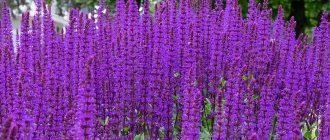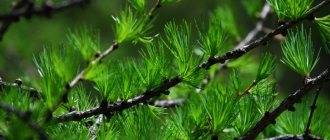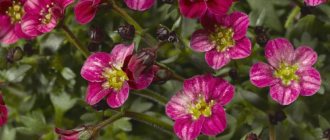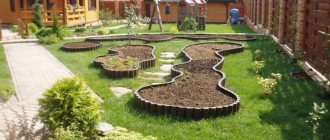- May 21, 2019
- Landscape design
- ROME.
One of the most striking decorations of any garden is coleus (nettle). It surprises with its color palette and unusual leaf shape. Coleus, photos of which are posted in our article, prove that they can fit harmoniously into any flowerbed.
How to grow them correctly? What kind of care do they need? How do they reproduce? We provide answers to these questions in our article.
Description of the plant
Coleus is a genus of plants of the Yasotkov family. It includes perennial evergreen shrubs and herbs. In nature, these plants are found in Asia, Africa, Australia and Indonesia. Most species have bright decorative foliage. They are used to decorate the garden and are also grown as an indoor crop.
The coleus plant can reach 80 centimeters in height. A distinctive feature of many species is the very bright color of the leaf blade. It can be variegated, with white, green, pink, red stains, dots, veins, stripes. Color combinations vary. This can be clearly seen in the photos of coleus plants posted in our article.
It is for the brightness of the leaves that the plant is valued. However, it blooms unattractively. When grown in gardens and indoors, the peduncles are removed in order to show the beauty of the leaf blades.
general information
The colloquial name for coleus, which it received for the expressive shape of its leaves, is weed. In the apartment the flower grows like an unpretentious perennial, but in the garden it will not survive the winter. And all because in nature it lives in Africa and Asia - regions with hot climates and no frost.
Coleus was brought to Europe on purpose and they immediately started breeding it. The first wild species amazed sailors so much that they brought them straight from the island of Java. So, since the nineteenth century, the popularity of the flower in the world has grown rapidly.
Photo: domashniecvety.ru
Coleus leaves can be the most unexpected colors: orange, red, burgundy. Most often, they combine several shades at once: for example, grassy green with purple. Together with the unusual shape of the plates, it looks very impressive and exotic!
Although it doesn't bother gardeners too much, coleus does have flowers. They are just small, faded and inconspicuous, whitish or blue. They are not particularly attractive, so it is better to remove the buds at the bud, otherwise they will draw almost all the nutrients onto themselves. Because of this, during flowering, the coleus leaves become smaller and fade.
Photo: flo.discus-club.ru
Bloom
How does coleus bloom? Why are flower stalks removed? The flowers of the plant are inconspicuous, purple or bluish, blooming on the tops of long shoots. They are collected in false whorls, which form a spike-shaped inflorescence.
Flowering lasts from June to September. After this, nut-shaped fruits with small seeds are formed. Under natural conditions, coleus blooms throughout the year. Some varieties do not set seeds.
What causes coleus disease?
The most common flower pests are spider mites, whiteflies, and aphids.
Aphids suck the sap from the plant, after which the leaves turn yellow. It is recommended to use special pest control products.
History, homeland of the plant, use
The plant came to Europe from Indonesia in the mid-19th century. 18 years later in England, at a garden auction, about 18 new hybrid varieties with different leaf colors were presented. All of them were successfully sold. In those days, coleus were highly valued, and new varieties were often named after crowned heads.
Coleus is native to tropical rainforests. It does not overwinter in temperate climates. Because of this feature and the decorative nature of the leaves, coleus is grown in gardens as a beautiful annual crop.
In recent years, these plants have become popular again. Ease of propagation, unpretentiousness and brightness played an important role when choosing coleus. Photos show that these plants are grown not only in private gardens, but also in parks. The bushes are ideal for shaping. This makes it easy to maintain an even shape and a certain style.
Diseases and pests
If young coleus is not pinched or trimmed in a timely manner, its stems will become elongated. Also, a young bush can stretch out due to poor lighting, and this can also happen to an old flower. If the light is too intense, the foliage becomes faded and loses its color. If watered incorrectly, the bush begins to shed its leaves. This occurs both with excessively poor watering and due to stagnation of liquid in the root system.
Among the insects that can harm coleus are spider mites, aphids and whiteflies. Aphids suck the sap from the bush, which causes yellowing and shrinking of the affected leaf blades. This pest is also considered the main carrier of dangerous diseases. To destroy it, the home plant is sprayed with a soap solution. If necessary, the treatment is repeated after 7 days. Remember that when spraying a bush with a soap solution, the surface of the substrate in the pot must be protected with film. If aphids settle on garden bushes, they will have to be treated with a solution of a special insecticidal agent, for example, Fitoverma or Aktellika. In order to save coleus from spider mites, it is sprayed with Apollo, Akarin, Oberon or Agravertine. To combat whiteflies, they use the same means as to exterminate aphids: Aktara, Aktellik, Oberon and others.
The use of chemicals can greatly harm coleus, which is why it is so important to follow simple rules of prevention. It has long been known that healthy and strong plants are avoided by pests, so take care of the flower properly and provide it with suitable conditions for growth.
Usage
In its homeland, the plant is used not only as a decorative garden decoration, but also grown for food. Some varieties of coleus have edible roots.
For example, on the island of Java, a variety of Blume with black tubers is grown, which are used for food. In Sudan, the Nigro variety is grown, which has dark, huge tubers. In Madagascar, a variety with small gray or yellowish-pink nodules is grown as a food product, and in Africa, coleus tubers reaching 20 cm in diameter are used as food.
Transplant into another pot.
A coleus cutting in a plastic cup can be taken to a summer cottage and planted in the ground. If there is no summer cottage, then we plant it in a larger pot.
When should you transplant coleus to another pot?
When the cutting has grown, when it is cramped in a pot, when a large flower and a small pot do not look harmonious. If the cutting is in a transparent plastic cup, you can see that the roots are in contact with the cup over the entire surface.
Transplanting coleus into a large pot
The pot needs to be larger than the previous container. You can use a clay pot, or a plastic one.
We lay drainage at the bottom of the pot - expanded clay or you can use polystyrene foam.
Pour soil into half the pot.
Choose a larger pot
We take coleus that needs to be replanted. Wrinkle the pot a little with your hands. Hold the stem near the root system with one hand, and remove the pot from below with the other. It comes out of the pot easily. If not, then pry it with a spoon.
We lower it into the center of the pot for replanting. We fill it with earth around it. Water and place in a flower tray.
Varietal diversity
There are over 150 varieties of coleus, but a few varieties have become widespread.
Coleus Blume, shown in the photo, is the most popular species. It is famous for its wide variety of foliage colors. Blume is a small perennial shrub. The height of its stems is from 30 to 80 centimeters. The leaves are oval, elongated, with coarsely toothed edges, drooping on both sides.
There are a huge number of variations in the patterns and shades of Coleus Blume. There are over 200 hybrids alone.
In landscape design, ampel-type coleus began to be used not so long ago. This group includes the Renalta species. Its stems are slightly drooping, the leaves are velvety, their colors are very different. Sri Lanka is considered the birthplace of Renalta. From crossing with other species, varieties used at home were developed. These include Reneltianus and Reneltianthus superbus, which have unusual red-brown leaves with a greenish border. The plant blooms with small blue flowers.
The dwarf coleus is considered the shortest species. The height of its bushes is no more than 30 cm. This variety is characterized by elongated red leaves and drooping stems. Because of this feature, it is grown as an hanging plant.
There are several dwarf varieties that differ in color and shape of the leaf blade. There are coleus not only with variegated leaves, but also with plain ones. Among them, the Golden variety is distinguished. It has yellow leaves.
When deciding which type of coleus to use in landscape design, garden owners often opt for hybrid varieties. They differ in the height of the bush (from 30 to 80 cm), as well as in the color, shape and size of the leaves. Hybrids amaze with their variety of patterns and brightness. The number of hybrid varieties of coleus is approaching 200. For convenience, they are grouped into series.
The most popular are:
- Wizard.
- Wisley.
- Superfine Rainbow.
- Fantasy.
The Wizard series includes varieties with a single color, variegated varieties, and coleus with a contrasting border, streaks, and veins. For example, the Wizard corduroy red variety has bright red leaves with pink veins. These flowers look especially impressive against the backdrop of green lawns. Bright, unusual and popular species include coleus with orange foliage (Vizard Snset variety).
The Wisley series has a special characteristic: its leaves are shaped like oak leaves.
Interesting varieties
In cultivation there are varieties often designated as Coleus × hybridus. One can write endlessly about the beauty of these plants, as new varieties are constantly appearing, with original, colorful leaves.
The most attractive are variegated varieties, green-yellow-carmine, pink-green, salmon-pink, brownish-red with yellow edging, beet with green spots.
There are many cultivars on the market bred for specific characteristics - size or pattern, leaf color - from light green to various shades of pink, burgundy, purple to dark, almost black (for example, Coleus Dark Star).
The patterns on the leaves come in a whole range of shades of yellow, and can also be white.
- "Electric Lime" Electric Lime - light green leaves with a lemon vein;
- "Florida Sun Rose" Florida Sun Rose - green-pink-purple leaves;
- "Gatar Glory" Gatar Glory - yellow-orange leaves;
- “Pink Chaos” Pink Chaos – green-white-pink leaves;
- “Splish splash” Splish Splash – green-burgundy leaves;
- "Wasabi" Wasabi – green leaves;
- "Bronze Age" Bronze Age - with copper-round leaves, compact shape;
- "Caipirinha" Caipirinha - with lemon leaves, burgundy vein;
- "Golden Dreams" Golden Dreams - lemon leaves with a red vein;
- “Pineapple Splash” Pineapple Splash – lemon leaves with burgundy spots;
- "Sky Fire" Sky Fire - with velvety, burgundy leaves with a bright green edge;
- “Walter Turner” Walter Turner – burgundy-red-green;
- Wizard Scarlet - purple with light green border;
- "Battemilk" Buttermilk - jagged, yellow-green leaves;
- “Religious Rutabaga” Religious Rutabaga – variegated, purple-green-cream;
- “Timotei” Timotei – creamy green;
- "Melibu Apricot" Malibu Apricot - apricot-yellow leaves;
- "Wild Lime" Wild Lime - strongly wavy, creamy green leaves;
- "Black Prince" Black Prince - very dark, almost black leaves;
- "Kong Rose" Kong Rose - with large, red-burgundy-lime leaves.
Reproduction
Coleus are very easy to grow at home. The plant is propagated by cuttings and seeds. In the first case, the material is obtained by pruning the plant. The cuttings need to be placed in water. They are planted in small containers when the roots appear. After some time, the culture is ready to be transplanted into a larger pot or flowerbed. Coleus are also grown by sowing seeds for seedlings.
Seeds are sown in early spring. Shoots always appear together and quickly. Coleus have a very high germination rate. The seedlings are unpretentious, tolerate pickling well, and grow quickly. During development, the bushes begin to form, giving them the desired shape.
Coleus are heat-loving plants. They cannot tolerate cold weather, so they are planted in the garden only after warm weather sets in.
Application
Coleus look spectacular both in flower beds and in containers. They can be planted individually in pots, combined into multi-colored groups, or created in multi-species compositions in which the unique color of the leaves will create an interesting effect. Multi-colored varieties can be used as an autumn accent in compositions that sometimes lose their appeal in late summer. The coleus flower with colorful leaves adds variety to the design of a terrace or balcony and is an ideal partner for petunias and other flowering plants.
You can plant several seedlings in one container, each a different color. There are so many variations that every year you can create a new composition. Coleus, with leaves in warm shades of red, orange, purple or brown, are eye-catching and attention-grabbing.
Low varieties are well suited for seasonal flower beds. They look good planted as seasonal borders, creating low plant borders. In flower beds, they can be periodically planted in empty spaces left by some perennials that disappear after flowering (for example, oriental poppy, lupins).
Features of care
When grown indoors, coleus are placed on the lightest windowsills. In the garden, it is better for them to choose a place in partial shade. The bright summer rays of the scorching sun can burn the leaves of the plant. Some varieties may lose color brightness and turgor. This reaction is associated with excessive light reaching the plants.
The culture is not very demanding in terms of temperature. She feels great at 16-25 degrees Celsius. In winter, the temperature in the room where coleus grows should not fall below + 12 degrees, otherwise the plant will shed its leaves and die.
Water it generously as the top layer dries. If the water is hard, it is better to use rain or melt water. In winter, the frequency of watering is reduced. The plant is watered rarely, but without allowing the earthen clod to dry out.
Under natural conditions, coleus are found in tropical latitudes with high levels of humidity. In order for them to develop normally at home, they need to be provided with similar conditions. In summer, coleus are sprayed to increase humidity levels. Some gardeners specifically place the flower in the kitchen, where they feel more comfortable.
During the period of intensive growth (from spring to autumn), the flower is fed. It responds well to mineral and organic fertilizers. In winter, fertilizing is carried out once a month.
Coleus is most often grown as an annual crop. In this case, it is not transplanted. In the fall, cuttings are cut and rooted, and the mother plant is disposed of. Some gardeners have been growing coleus for many years, creating unusual standard trees.
Landing
Coleus needs a large dose of sun, which will make its leaves large and intensely colored.
Soil for coleus is needed with the following characteristics:
- average or fertile;
- well drained;
- moist but not waterlogged;
- acidic or neutral (pH 5-7).
When planting in open ground, the area must be dug up before planting, weeds must be selected, and if necessary, well-rotted compost or peat must be added for digging.
When planting in a pot, you can use universal soil for balcony flowers.
Coleus seedlings can be planted outside in open ground after May 15-20, when the last frost has passed. Plants are planted at a distance of 15 × 25 cm or one seedling per pot with a diameter of 12-13 cm.
Soil selection
The choice of soil is also one of the important points for planting coleus. In principle, the composition itself can be anything, but the presence of nitrogen and nutrients in the soil is mandatory. This promotes full growth and development of beautiful, bright leaves with a more pronounced stencil pattern.
For the seeds to germinate, the most nutritious mixture will be:
- 4 servings of black soil;
- 2 portions of pine needles;
- 2 servings of cow manure;
- 1 portion of sand.
The soil for preparing the mixture should be thoroughly warmed and sifted. In order for the plant to grow for sure, it is worth planting the seedlings in separate containers, and after germination, transplant them into the ground in the garden.











